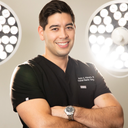Posted underRhinoplasty q&a
A small bump has formed on my nose tip 5 and a half months after surgery, what could this be? Shifting cartilage grafts? (photo)
A few days ago I noticed a small little bump forming on the right side of my tip. It feels hard and almost pointy to touch. The only thing I've been doing differently is tanning in a tanning bed. Could this cause this bump? It's Friday right now and I didn't have it on Tuesday. I'm about 5 and a half months post op right now. Is it still possible for cartilage grafts to shift at this point? What could this bump be? Will it go away?
Answers (13)
From board-certified doctors and trusted medical professionals
Dr. Nicholas Husni, MD, PhD, FACS

Dr. Nicholas Husni, MD, PhD, FACS
Board Certified Plastic Surgeon
Answer
Dr. Ali Sajjadian, MD, FACS

Dr. Ali Sajjadian, MD, FACS
Board Certified Facial Plastic Surgeon
Answer
Dr. Jeffrey Lisiecki, MD

Dr. Jeffrey Lisiecki, MD
Board Certified Plastic Surgeon
Answer
Dr. Thomas Buonassisi, MD

Dr. Thomas Buonassisi, MD
Board Certified Facial Plastic Surgeon
Answer
Dr. Kyle Kimura, MD

Dr. Kyle Kimura, MD
Board Certified Facial Plastic Surgeon
Answer
Dr. Mark K. Markarian, MD, MSPH, FACS

Dr. Mark K. Markarian, MD, MSPH, FACS
Board Certified Plastic Surgeon
Answer
Dr. Karan Dhir, MD

Dr. Karan Dhir, MD
Board Certified Facial Plastic Surgeon
Answer
Dr. Steven Wallach, MD
Dr. Steven Wallach, MD
Board Certified Plastic Surgeon
Answer
Dr. Ivo Gwanmesia, FRCS(Plast)
Dr. Ivo Gwanmesia, FRCS(Plast)
Specialist Registered Plastic Surgeon
Answer
More Rhinoplasty Questions
See all Rhinoplasty Q&AWE SEND PRETTY
EMAILS
What’s trending? Who’s turning heads? Which TikTok myths need busting? We’ve got you. No fluff, no gatekeeping—just real talk. Get our free, unfiltered newsletter.
